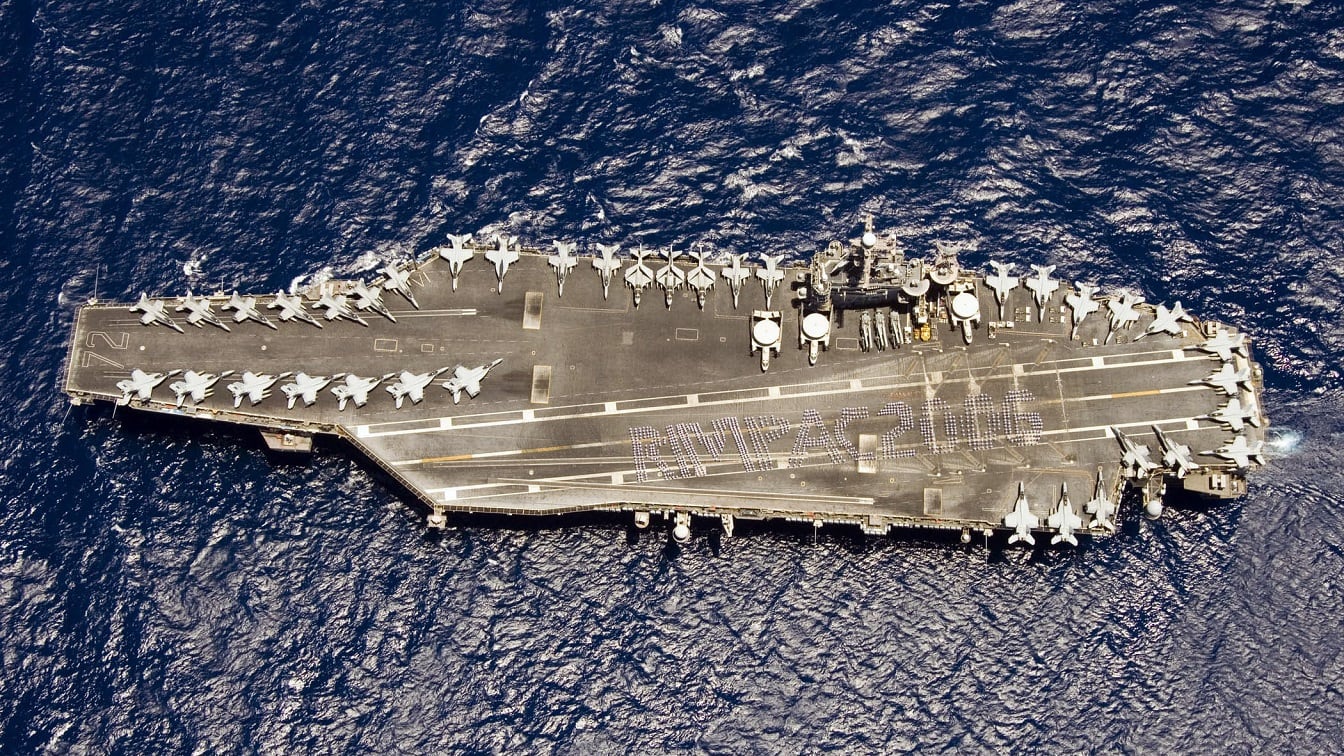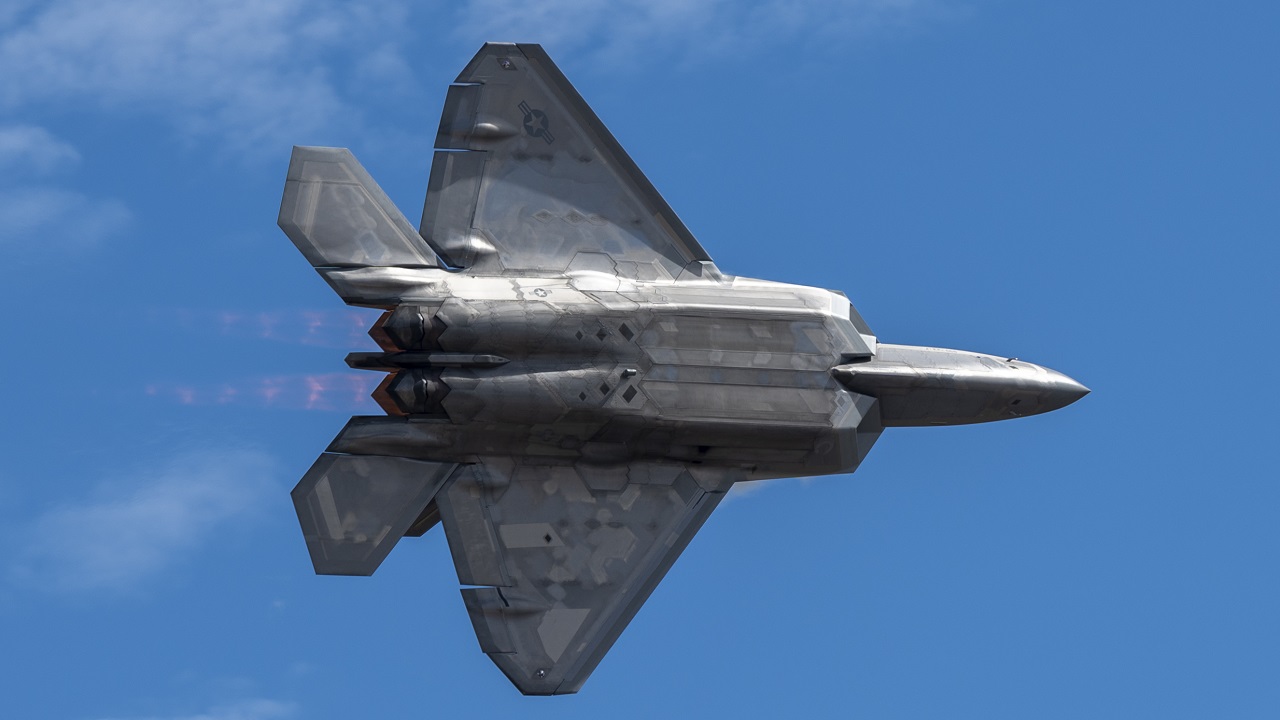The long-anticipated U.S. pivot to Asia is gaining steam. Multiple branches of the U.S. military, as well as partners and allies in the Indo-Pacific region, are rolling up their sleeves in preparation for large-scale exercises later this summer that will span the entire region on land, in the air, and at sea.
To Fight and Win in the Indo-Pacific Against China
In comments given at the Sea-Air-Space Conference held this week at National Harbor in Maryland, U.S. Navy Vice Adm. Michael Boyle explained that while individual military services have conducted training in the Indo-Pacific, close coordination among the joint forces—as well as international forces allied with the United States—would be of the utmost importance in an Indo-Pacific war.
TMZ reported on comments Boyle made during a panel discussion covering the role of Carrier Strike Groups in deterring and dominating conflict.
“If we’re going to integrate the joint force, then how do we provide joint requirements?” Boyle observed when asked about particular challenges in the Pacific theater. “And so, I said, ‘How do we provide joint requirements?’ And we really don’t—the services each provide requirements. So, what’s the best place to determine what a requirement might be? In my mind, it’s joint rehearsal.”
“I looked around to see where we do joint rehearsal, and we really don’t,” Boyle said. “What I saw was we do war games which validate a concept, we do experiments which validate a capability, and we do exercises which validate a plan, but we don’t do rehearsal, even our field training exercises where we get the teams together, validate tactics [but] don’t validate what the right capability to bring to the fight is.”
The Pentagon is preparing large-scale exercises to sharpen the fighting potential of the different service branches and test interoperability by putting them all through their paces.
Who and Where: We Have Some Mystery
Although Boyle did not go into great detail about which forces would be directly involved in the exercises, he did say that the Air Force Weapons School, Navy Fighter Weapons School, and the Marine Expeditionary Force stationed at Camp Pendleton, California, would participate in the drills, and that Cyber Command and the U.S. Space Force would join them in an unspecified capacity.
Strategic Foreshadowing?
In a preview of the scale of exercises that might be expected in the future, the U.S. Air Force is leading the two-week-long Return of Forces to the Pacific, or REFORPAC, this summer.
In comments given last year, Air Force Chief of Staff General David Allvin explained that logistics must be tested in these exercises. “One of the issues that will be addressed—that we’re starting to address, we saw a little bit of this most recent Bamboo Eagle—is how mission-ready are we to deploy in a complex environment and sustain operations and be able to do logistics under attack?”
Allvin added that “to be able to generate and maneuver within the environment, to sustain the mobility fleet that can get around, make sure the munitions and fuel and everything gets to the right place.”
The first iteration of Bamboo Eagle, primarily an air-warfare exercise, happened last year off the West Coast.
The REFORPAC exercise will overlap with Talisman Sabre, initially a joint exercise between Australia and the United States that has since expanded to include around 12 countries in Europe and Asia. During its last iteration, in 2023, Talisman Sabre saw tens of thousands of service members participate.
The Indo-Pacific and the Tyranny of Distance
Thanks to the incredibly vast distances between islands and bases, in the Indo-Pacific, logistics is more complex. Surface ships also have nowhere to hide at sea, which, given the proliferation of satellite networks with persistent overwatch capabilities, may make them less survivable than in previous conflicts.
The Marine Corps has taken steps to address this challenge by encouraging dispersed, semi-autonomous logistics and prepping Marines to live off the land by foraging native flora and fauna.
What Happens Next?
Boyle’s comments show the Pentagon’s thinking as it turns to the Indo-Pacific region and prepares to deter or win the next war there.
Large-scale exercises at sea are not a far cry from the kinds of multinational exercises NATO allies conducted during the Cold War, both to showcase abilities openly to the Soviet Union, but also to stress-test everything from logistics to communications, reconnaissance, and everything in between.

Aerial overhead view of US Navy (USN) Sailors aboard the USN Nimitz Class Aircraft Carrier USS ABRAHAM LINCOLN (CVN 72) spelling out RIMPAC 2006 on the flight deck of the ship during a photo exercise during Exercise Rim of the Pacific (RIMPAC) 2006 in the Pacific Ocean (POC). The exercise is designed to increase the tactical proficiency of participating units in a wide array of combined sea operations. RIMPAC 2006 brings together military forces from Australia (AUS), Canada (CAN), Chile (CHL), Peru (PER), Japan (JPN), the Republic of Korea (KOR), United Kingdom (UK) and the United States (US).
U.S. Navy photo by Mass Communication Specialist Seaman James R. Evans (RELEASED)
The great range between the Indo-Pacific’s far-flung locales will be difficult to overcome. But it plays to the strengths of the Navy and, in particular, to the Marine Corps—as the United States’ expeditionary force in waiting.
About the Author: Caleb Larson
Caleb Larson is an American multiformat journalist based in Berlin, Germany. His work covers the intersection of conflict and society, focusing on American foreign policy and European security. He has reported from Germany, Russia, and the United States. Most recently, he covered the war in Ukraine, reporting extensively on the war’s shifting battle lines from Donbas and writing on the war’s civilian and humanitarian toll. Previously, he worked as a Defense Reporter for POLITICO Europe. You can follow his latest work on X.

